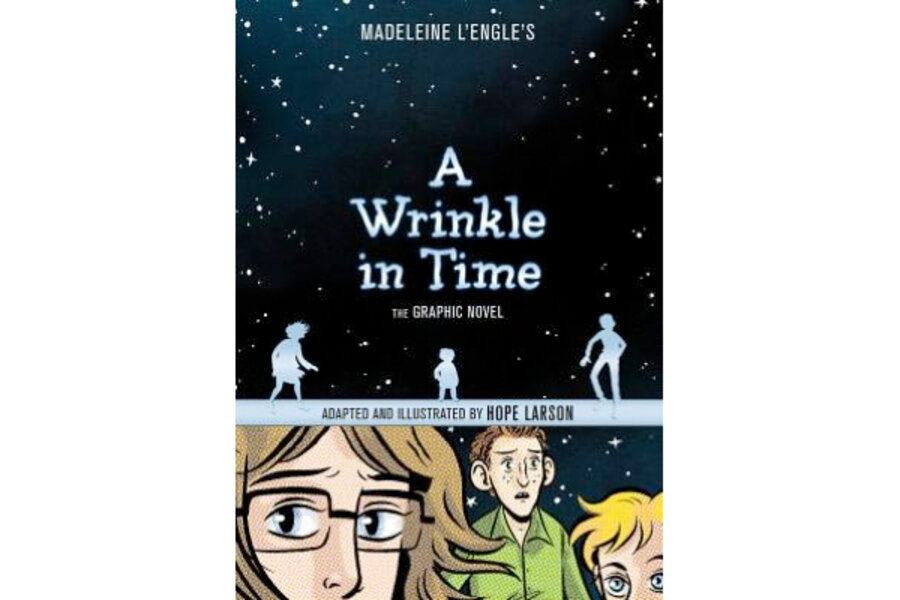'A Wrinkle in Time' receives the graphic novel treatment
Loading...
The classic sci-fi novel “A Wrinkle in Time” by Madeline L’Engle has been adapted into a graphic novel by Hope Larson.
The novel, which was released earlier this month and completed with permission from L’Engle’s estate, tells the story of Meg Murry, her brother Charles Wallace, and their friend Calvin as they all search for Meg and Charles Wallace’s father, who went missing after participating in a government project. The story is told in black, white, and light blue panels drawn by Larson, who also adapted the story.
The writer and illustrator, who was also behind the art and text of the graphic novel "Mercury," told The Los Angeles Times that “A Wrinkle in Time” was one of her favorite books growing up.
“It was definitely an important book for me,” Larson said. “It’s one of those books that I’ve gone back to again and again throughout my life.”
Larson said she believes the story is still fresh today despite being first published in 1962.
“I wasn’t really even aware that it was a story that was published in the ’60s,” she said of reading it when she was younger. “It has this freshness to it. And all the science and everything, it just doesn’t feel like it has aged all that much. It feels that way more now, because we all have cell phones and we all have computers, but in the ’80s and probably the ’90s, you wouldn’t sit down and think, 'Oh this takes place like 50 years ago.' ”
The writer said that she based the illustrations for the first scene, in which heroine Meg is frightened by a thunderstorm in her room, on pictures of L’Engle’s house, which was reportedly the basis for the Murrys’ home.
She hopes the graphic novel will also attract younger readers, said Larson.
“My hope is that kids who are intimidated by the novel may try the graphic novel,” she said. “And if they can get through the graphic novel, they’ll basically have read the novel already because almost all of the text is in there.”
She said the most challenging part of the book for her to illustrate was a scene in which Meg, Charles Wallace, and Calvin look at “darkness” in space, which is described to them as an evil force that is attacking the universe.
“Larson obviously has great affection for the tale of time and space travel, outsiders, and fascism, and she has created a tender graphic novel from it,” writer Lauren Davis said in a review for the website io9, though she noted that the fast pace of the graphic novel meant readers were better served if they’d already read the original book.







